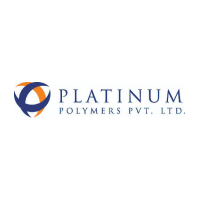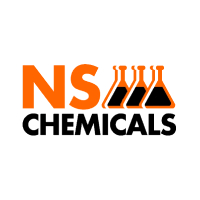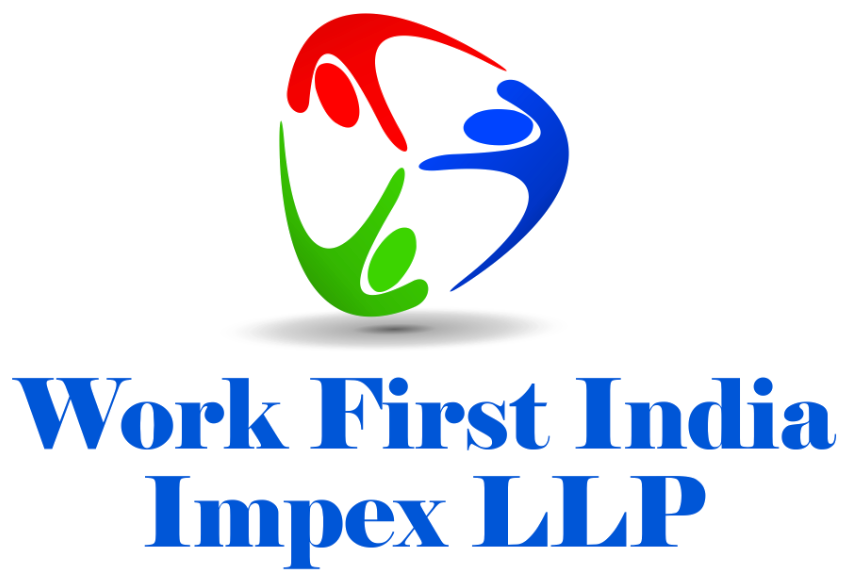SAFTA License Certificate of Origin for Exporters of India
SAFTA License Certificate of Origin for Exporters of India
SAFTA License is a certificate of origin issued by DGFT for importers and exporters of India. SAFTA certificate is added to the commercial invoice to show the country of origin of goods.
SAFTA stands for South Asian Free Trade Area. Afghanistan, Bangladesh, Bhutan, India, Maldives, Nepal, Pakistan, and Sri Lanka constitute the member nations of SAFTA.
As SAFTA comes up with many tax benefits for exporters in India. The South Asian Free Trade Agreement (SAFTA) is a significant certification demanded by merchant exporters engaged in international trade within the South Asian region. This agreement aims to promote regional economic cooperation and integration among the member countries.
SAFTA operates on the principle of preferential tariffs, allowing member countries to trade goods and services at reduced or eliminated customs duties, thereby facilitating seamless and cost-effective cross-border trade. By eliminating tariffs and other trade barriers, SAFTA provides various tax benefits for exporters in India. Read to know the importance, requirements, and process of SAFTA registration.
Table of Content
- Importance of SAFTA License
- Procedure of SAFTA Registration
- Documents Required for SAFTA License
- SAFTA Registration Fees
- Other Free Trade Agreements
- Frequently Asked Questions (FAQs)

Importance of SAFTA License
- It is mandatory for importers and exporters to add the Certificate of Origin to the commercial invoice to avoid any shipment problems. Certificate of Origin is an instrument which establishes evidence of origin of goods imported into any country.
- These certificates are essential for exporters to prove where their goods come from and therefore stake their claim to whatever benefits goods of Indian origin (Make in India) may be eligible for in the country of exports.
- There are tax exemption benefits also if the exporter has a SAFTA License. Most exporters don’t need to charge GST in their bill or invoice if they have attached the certificate of origin.
- This gives a boost in sales and preference to the exporter holding SAFTA certificate. If the exporter doesn’t charge GST on export of goods, then the importer will have to pay a lesser price. The importer will prefer an exporter who charges “Base Price + No Tax”.
Categories of Certificate of Origin
There are two categories of Certificate of Origin:
- Preferential Scheme: Preferential certificates prescribe Rules of Origin which have to be met for exports to be eligible for tariff preference.
- Non-Preferential Scheme: These Certificate of Origins evidence origin of goods and do not bestow any right to preferential tariffs.
Documents Required for SAFTA License
To obtain a SAFTA (South Asian Free Trade Area) License, the following documents are typically required for the registration process
- Organization Digital Signature Certificate (embedded IEC Code)
2. Registered Email on DGFT
3. Updated IEC License
4. DSC software
5. Mobile No.
6. Commercial Invoice
7. Purchase Bill that has details of quantum/ origin of inputs/ consumables used in export products
8. Declaration from Manufacturer (Exporter) in Letterhead
9. Product Details
10. Purchase order from importer
Note: In the case of tea, exporters who are required to submit Certificate of Origin (Non Preferential) are to apply to the Tea Board or any Inspection Agency authorized by the Tea Board along with documents listed above.
Process for IJCEPA Registration
The IJCEPA Registration refers to registration under the India-Japan Comprehensive Economic Partnership Agreement (IJCEPA) which facilitates trade. Here’s the step-by-step process:
The SAFTA registration process encompasses the subsequent stages:
- Account Creation with Organization based DSC (embedded IEC). All the data will be fetched through IEC
- Apply Online for Certificate of Origin
- Fill the form with appropriate details
- Upload the necessary documents
- Issuance of SAFTA Certificate (within 2-3 working days)
The SAFTA Registration fees
The SAFTA Registration fees are listed below:
| SAFTA Registration | Cost |
|---|---|
| Government Fee | ₹ 780 |
| Application Fee | ₹ 2000 |
| One time registration fee | ₹ 500 |
| Total Fee | ₹ 3208 Only |
Note: SAFTA Certificate has to be issued for each invoice.
Note: The aforementioned Fees is exclusive of GST.
GET EXPERT CONSULTATION
Other Free Trade AGREEMENT |
India has enhanced its market access commitments for neighbouring service providers. These commitments provide companies with an opportunity to build market expertise and grow by international expansion. Under Free or Preferential Trade Agreement there are multiple options where certificate of origin can be generated from India for import benefits to importing companies:-
ICPTA – India Chile Preferential Trade Agreement
SAFTA – South Asia Free Trade Agreement
SAPTA – SAARC Preferential Trade Agreement
IKCEPA – India Korea Comprehensive Economic Partnership Agreement
IJCEPA – India Japan Comprehensive Economic Partnership Agreements AIFTA-ASEAN India Free Trade Agreement
ISFTA – India Sri Lanka Free Trade Agreement
APTA-Asia Pacific Trade Agreement
GSP-Generalized System of Preferences
GSTP – Global System of Trade Preferences
IMCECA – India Malaysia Comprehensive Economic Cooperation Agreement
ISCECA – India Singapore Comprehensive Economic Cooperation Agreement
Authorized Agencies in India for Issuing Certificates of Origin
In India, the authorized agencies responsible for issuing certificates of origin are clearly listed in Appendix 35 of the Handbook of Procedures, Volume-1, as per the Foreign Trade Policy. These are:
| Agreement | Agencies authorized to issue Certificate of Origin |
|---|---|
| Asia Pacific Trade Agreement (APTA) | Export Inspection Council (EIC); Export Development Authorities; Development Commissioners of EPZS and SEZS; FIEO |
| Global System of Trade Preferences (GSTP) | EIC for all products; Tobacco Board, Guntur for tobacco and tobacco products |
| India Afghanistan PTA | EIC |
| India ASEAN Trade in Goods Agreement | EIC |
| India Chile PTA | EIC |
| India JAPAN CEPA | EIC |
| India Mercosur PTA | EIC |
| India Singapore CECA | EIC |
| India Soth Korea CEPA | EIC |
| South Asian Free Trade Agreement(SAFTA) | EIC |
Conclusion
The Safta certificate helps exporters to get a preferential treatment and avail many benefits such as less or no custom duties on products listed under SAFTA agreement. Safta also works as “Certificate of origin” for products which helps gain trust in export market overseas. Therefore exporters are professionally advised to obtain SAFTA certificate for their business in India.
Why Professional Utilities?
At Professional Utilities, we leverage our industry knowledge and expertise to help businesses navigate complex regulations, minimize risks, and optimize operations for maximum efficiency and profitability.
- One Stop Corporate Solution
- PAN India Services
- Free Expert Assistance
- Dedicated Support Staff
- Google Verified Business
- Money-Back Guarantee
TRUSTED BY |






Frequently Asked Questions (FAQs)
A Comprehensive Economic Partnership Agreement (CEPA) or Comprehensive Economic Cooperation Agreement (CECA) is different from a traditional (FTA) Free Trade Agreement in two ways.
Firstly, CEPA or CECA are more comprehensive and ambitious than an FTA in terms of coverage of areas and the type of commitments. While a traditional Free Trade Agreement focuses mainly on goods; a CECA/CEPA is more ambitious in terms of a holistic coverage of many areas like services, investment, competition, government procurement, disputes etc.
Secondly, CEPA/CECA looks deeper at the regulatory aspects of trade than a Free Trade Agreement. It is on account of this that it encompasses mutual recognition agreements that cover the regulatory regimes of the partners. An MRA recognises different regulatory regimes of partners on the presumption that they achieve the same objectives.
Country of origin / Rules of origin (ROO) are the criteria needed to determine a product for purposes of international trade. Their significance is derived from the fact that duties & restrictions in several cases depend upon the source of imports. Rules of origin are used:
⚫ to implement measures and instruments of commercial policy such as antidumping duties and safeguard measures;
⚫ to determine whether imported products shall receive most- favored-nation (MFN) treatment or preferential treatment;
⚫ for the purpose of trade statistics;
⚫ for the application of labeling and marking requirements; and
⚫ for government procurement.
Countries negotiate Free trade Agreements for a number of
reasons:
• By eliminating tariffs and some non-tariff barriers Free trade Agreement partners get easier market access into one another’s markets. Countries negotiate FTA’s for a number of
reasons.
• Exporters prefer Free trade Agreement’s to multilateral trade liberalization because they get preferential treatment over non- Free trade Agreement member country competitors. For Instance in the case of ASEAN, ASEAN has a Free trade Agreement with India but not with Canada. ASEAN’s custom duty on leather shoes is 20% but under the Free trade Agreements with India it reduced duties to zero. Now assuming other costs being equal, an Indian exporter, because of this duty preference, will be more competitive than a Canadian exporter of shoes. Secondly, Free trade Agreement’s may also protect local exporters from losing out to foreign companies that might receive preferential treatment under other FTAs.
• Possibility of increased foreign investment from outside the Free trade Agreement. Consider 2 countries A and B having a Free trade Agreement. Country A has a high tariff and large domestic market. The firms based in country C may decide to invest in country A to cater to A’s domestic market. However, once A and B sign a Free trade Agreement and B offers a better business environment, C may decide to locate its plant in B to supply its products to A.
• Such occurrences are not limited to tariffs alone but it is also true in the case of non-tariff measures. Especially when a Mutual Recognition Agreement (MRA) is reached between countries A and B. Some experts are of the view that slow progress in multilateral negotiations due to complexities arising from a large number of countries to reach a consensus on polarizing issues, may have provided the impetus for FTA’s.
Possibility of increased foreign investment from outside the Free trade Agreement. Consider 2 countries A and B having a Free trade Agreement. Country A has a high tariff and large domestic market. The firms based in country C may decide to invest in country A to cater to A’s domestic market. However, once A and B sign a Free trade Agreement and B offers a better business environment, C may decide to locate its plant in B to supply its products to A.
• Such occurrences are not limited to tariffs alone but it is also true in the case of non-tariff measures. Especially when a Mutual Recognition Agreement (MRA) is reached between countries A and B. Some experts are of the view that slow progress in multilateral negotiations due to complexities arising from a large number of countries to reach a consensus on polarizing issues, may have provided the impetus for FTA’s.
The criteria in the (ROO) rules of origin sets out specific & detailed conditions on the level of processing that an imported item from a non Free Trade Agreement partner country must undergo in the Free Trade Agreement partner country (or other eligible countries in the region) before being eligible to be called an originating product of a Free Trade Agreement partner country. Some of the common standards used are:-
⚫ change in tariff class (this could be at the tariff chapter, tariff
heading or tariff sub heading level)
⚫ regional value addition
⚫ substantial processing or manufacturing by excluding some
minimal operations.
The four methods of supply-
Method 1: Cross border supply (supply from the territory of a Party into the territory of the other Party). For Instance an architect can send his architectural plan through electronic means; a lecturer can send teaching material to students in any other country; a doctor sitting in France can advise his patient in India through digital means. In all these cases, trade in services takes place and this is equal to cross-border movement of goods.
Method 2: Consumption abroad (consumption in the territory of a Party by the service consumer of the other Party). For Instance a tourist using hotel or restaurant services abroad; a ship or aircraft undergoing repair or maintenance services abroad.
Method 3: Commercial presence (by a service supplier of a Party, through commercial presence in the territory of the other Party). In this case, the service supplier establishes a legal presence in the form of a representative / branch office / joint venture/ subsidiary in the host country & starts supplying services. For Instance a bank opens its branch in another country.
Method 4: Presence/movement of natural persons (by a service supplier of a Party, through presence of natural persons of a Party in the territory of the other Party). For Instance Independent service suppliers (e.g. doctors, engineers, individual consultants, accountants, etc.) who provide services in another country. However, GATS covers only temporary movement & not citizenship, residence or employment on a permanent basis in the foreign country.
India has preferential access, economic cooperation and Free Trade Agreements (FTA) with about 54 individual countries. India has signed bilateral trade deals in the form of Comprehensive Economic Cooperation Agreement (CECA) / Comprehensive Economic Partnership Agreement (CEPA) / Free Trade Agreement / Preferential Trade Agreements (PTAs) with some 18 countries. India is a late & cautious, starter in concluding comprehensive PTA covering substantially all trade with some of its trading partners.
